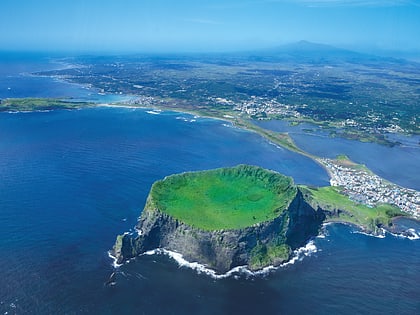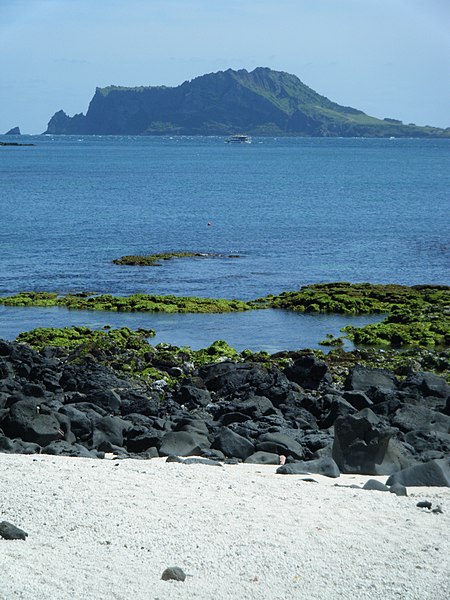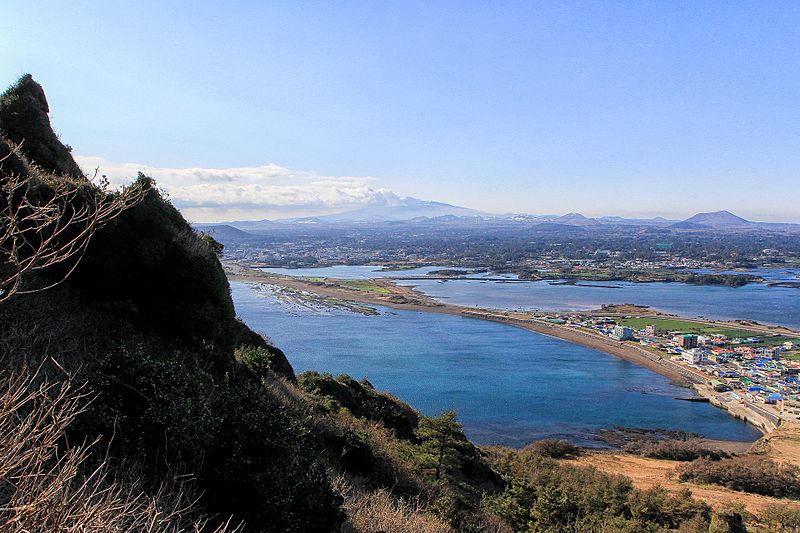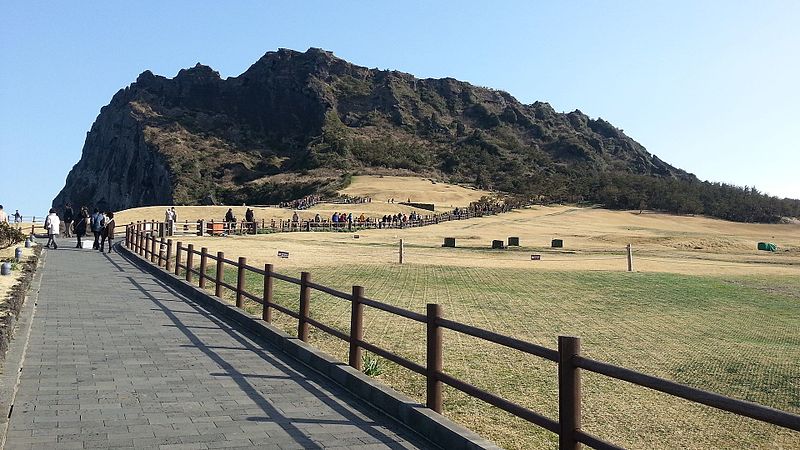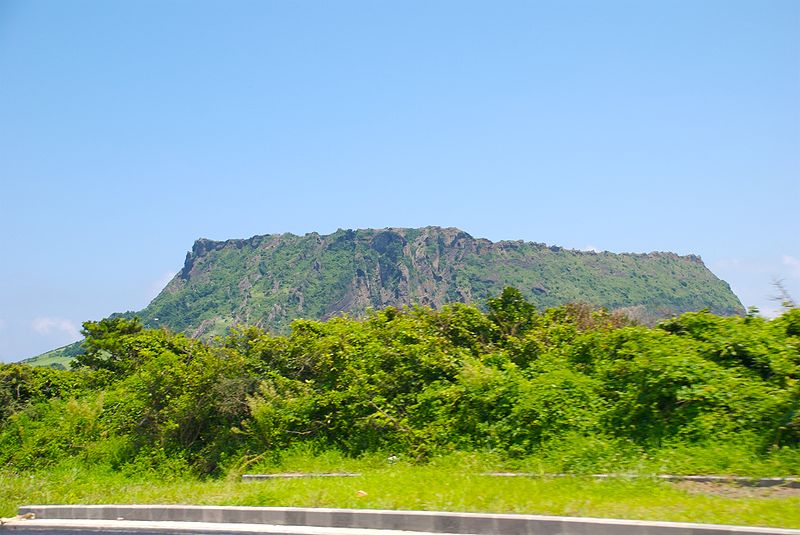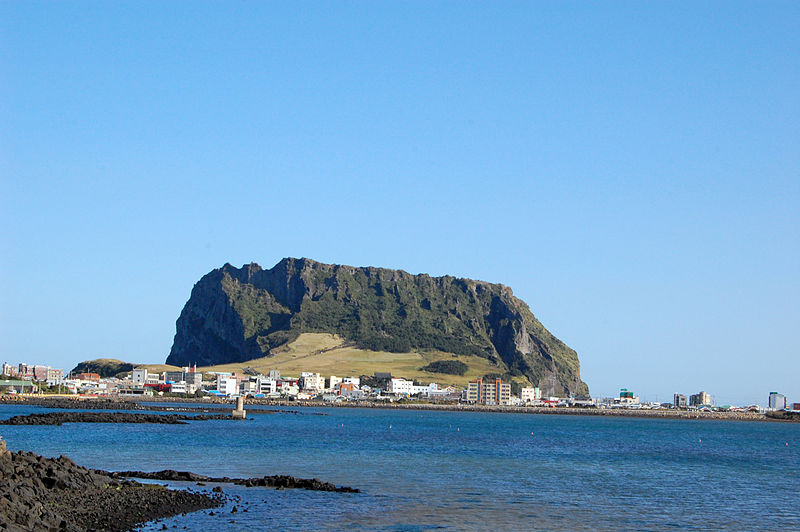Seongsan Ilchulbong

Facts and practical information
Seongsan Ilchulbong, also known as "Sunrise Peak," is a majestic natural wonder on the eastern shores of Jeju Island, South Korea. This UNESCO World Heritage site is a tuff cone formed by hydrovolcanic eruptions approximately 5,000 years ago. It stands 182 meters tall and is renowned for its well-preserved bowl-like crater at the summit, which spans about 600 meters in diameter.
The site is a popular destination for both tourists and locals, attracting visitors who climb to the peak for the breathtaking panoramic views of Jeju Island and the chance to witness spectacular sunrises. The climb, involving a series of steps, takes approximately 20 to 30 minutes and rewards climbers with a unique landscape of the crater surrounded by 99 sharp rocks that resemble a crown.
Seongsan Ilchulbong is not only a geological marvel but also an important ecological reserve, home to a variety of plant and animal species. The site's natural beauty and scientific significance make it a prime example of Jeju Island's volcanic heritage and contribute to the island's reputation as a place of outstanding natural phenomena.
The peak's dramatic presence and the surrounding seascape also play a significant role in local culture, featuring in festivals and folklore. Visitors to Seongsan Ilchulbong can immerse themselves in the area's rich heritage and enjoy nearby attractions, including the Haenyeo Museum, dedicated to the island's traditional female divers.
